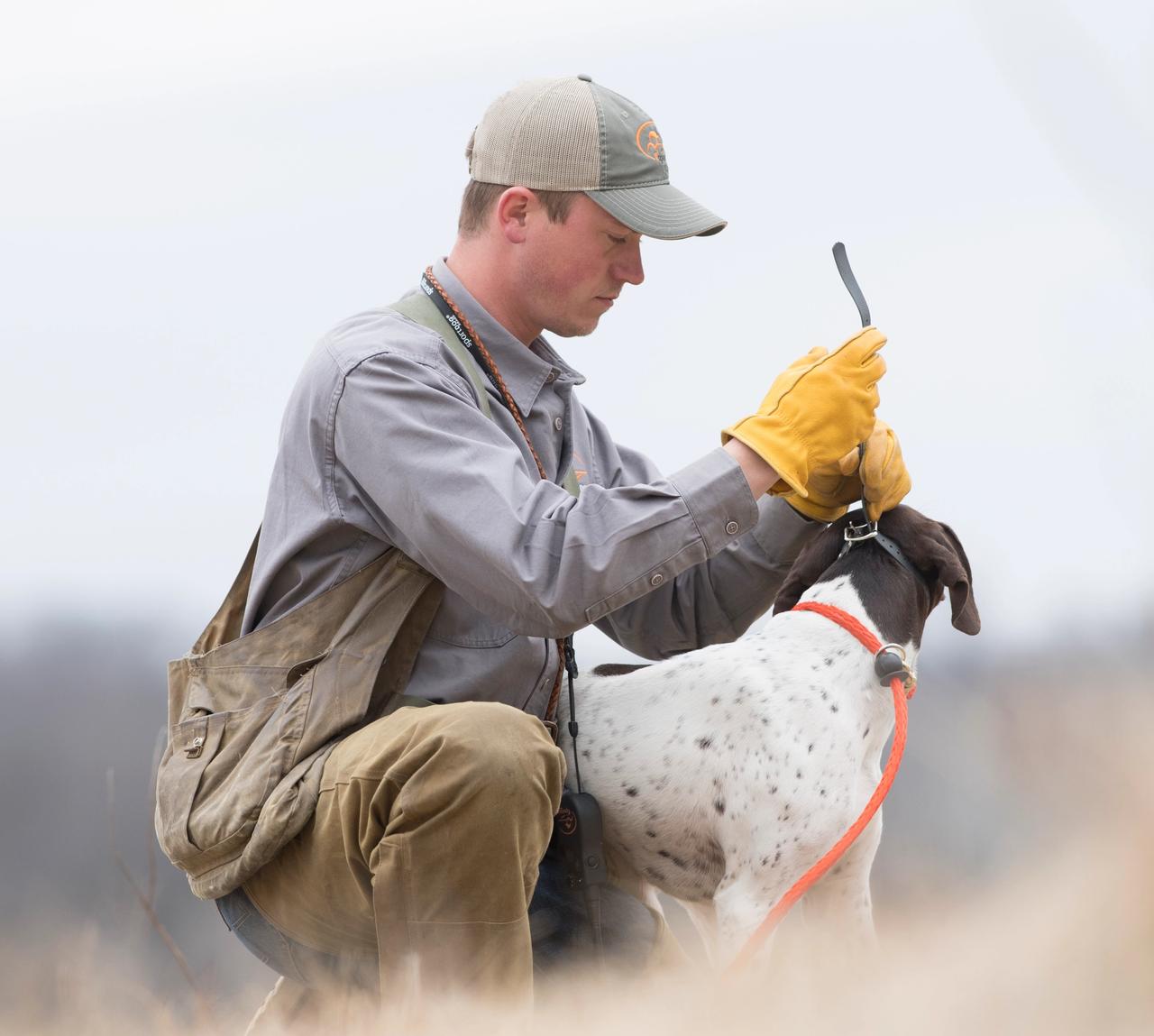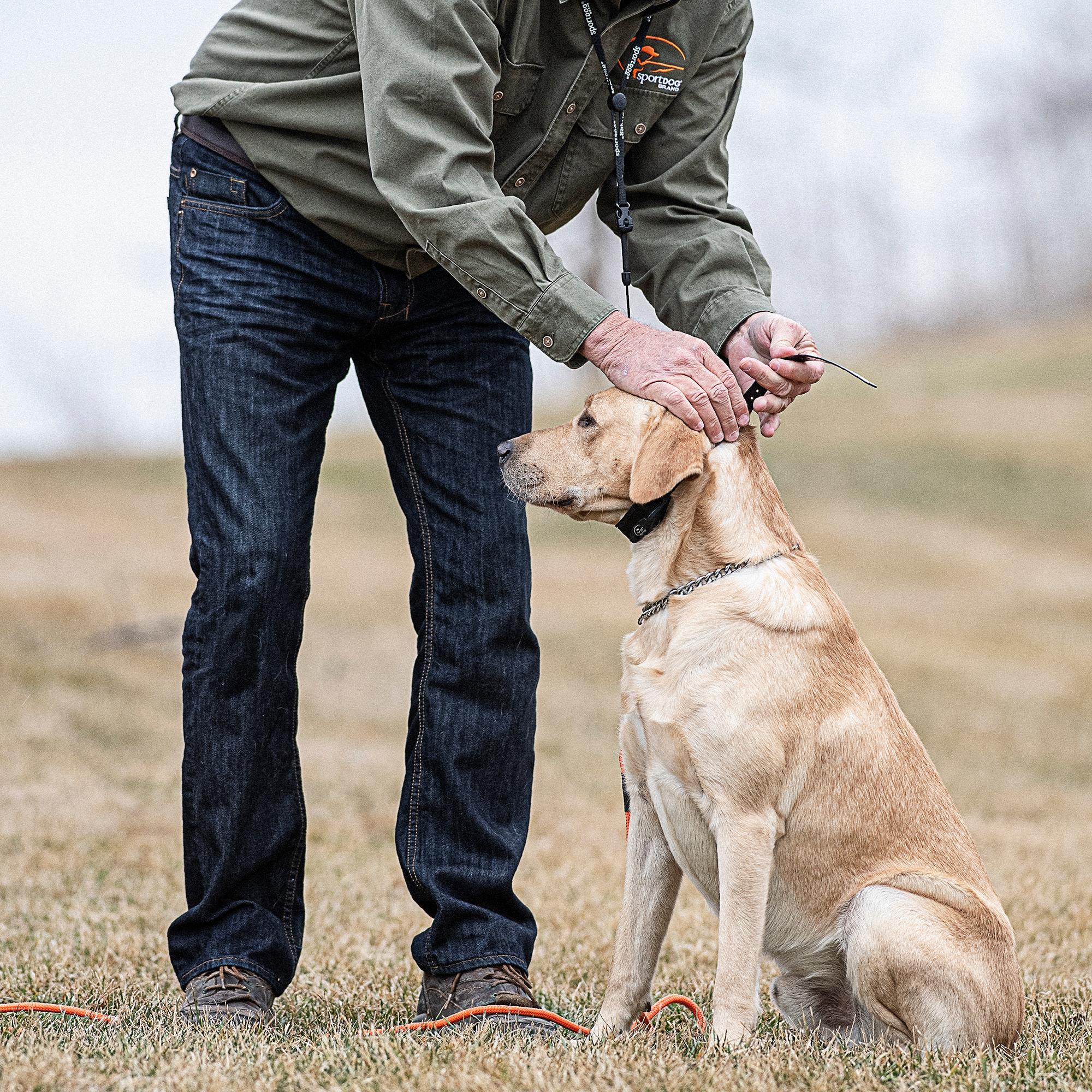
Proper Introduction to the E-Collar
Posted by The SportDOG StaffThe e-collar is an amazing tool. It can fine-tune a dog, extend your control, and even save an animal’s life. But here’s the thing: You must understand what it is. It is not a magic bullet. I call it a polishing tool. It’s an enforcement tool and a distance minimizer.
What I tell people is that it should be thought of as a shellac for finishing a dog, like you would finish furniture or cabinets. When the cabinetmaker is sanding the wood, or even staining the wood, the shellac is over in the corner. It’s the same way with training obedience. I train heel, sit, stay, here and no, and I don’t use the e-collar. But, when I’m getting ready to polish it and I get ready to fine tune it, that’s when I’m like the cabinetmaker and I’m going to reach for that shellac. So, the e-collar comes in after you’ve trained the behavior what I call formally and manually. Then you come back and polish with the e-collar.
Now, as you’re polishing with the e-collar, you’re going to learn what level of static stimulation to use. Here’s the key: You start off low, with level 1. The collar I’m running right now has 9 different levels of low medium and high, so I have 9 different levels within each of those ranges that I have at my fingertips that I can get to within a half-second. This allows me to customize that collar to any dog that I have. Today, I ran 26 dogs on setups. As I ran them, I ranged anywhere from level 1 to level 8. I knew each dog and I know what level I needed to be on.
You must also understand there are different infractions. When we were growing up, if we left our pajamas on the bathroom floor, Mama would come in and verbally get onto us. If we left our bicycle outside at night, that was a bigger infraction. If we took mom’s car and went to the store when we were 12 years old, that was a humungous infraction. In dog training, those would have been level 1, level 2, and level 6 infractions.
Depending on what kind of dog you have and what you’re trying to teach, you might vary a fair amount. If I’m working on heel, I’m going to be on a level 1 or a level 2 for 90% of the dogs. However, if I have a dog in a hunting scenario that takes off at the shot before I send him, that’s probably going to be a level 4, 5, 6, or even a 7, depending on the dog. The reason is simply this: Breaking endangers him. It also endangers me, because he could knock my shotgun out of my hand or knock me into somebody. That’s a huge no-no.
Let’s say you are dove hunting next to a gravel road and you shoot a dove that lands on the other side of the road. If that dog takes off on his own and is heading for the road, you turn that e-collar up and let him have it. Believe me, the e-collar has saved more dogs lives than any one tool that will ever be built. That variable rate is so critical, because you can use a level 1 and you can use a level 9 at the flick of a switch.
So now that we understand static stimulation levels and the purpose of the e-collar, how do we introduce it the first time and find out what levels to use on our dogs? It’s actually pretty easy. I do it after I’ve taught heel on the leash. Now I’m going to teach the dog to heel on the e-collar. Again, I’m going to put it on the dog and I’m going to put it on level 1.
When I train with the leash, we walk around until the dog gets out of its spot. Then, I snatch the leash kind of like I’m catching a fish. I’m putting the pressure on a dog’s neck to teach him when he has stepped out of line. Now, instead of applying that pressure with a leash, I’m going to apply that pressure with the e-collar. I start with the lowest setting, and I read the dog’s ears, tail and body to tell if it’s actually doing very much to him or not. If it doesn’t seem like the dog is reacting, I click it up to level 2.
I’ll go through the levels until the dog starts to show a response. Usually what happens is I’ll go 1, 2, 3, 4, and then all of a sudden the dog gives a big reaction. Then, I’ll click it back down to a 1 or a 2 and that’s all I’ll need from there on out. That’s the way it works with most dogs because they don’t know what it is. Once they figure out what it is, you can back down with it.
I do use the leash, too, during this introduction phase. I want to make sure I don’t make a dog panic and try to bolt. I have the leash in my hand while I’m walking the dog at heel but I’m not using it to correct the dog. I’m just using the e-collar. After just a few sessions, the dog will get a feel for the e-collar and I’ll get a feel for what levels I’m going to use for the dog. From there on, I’m going to teach the behaviors manually, and when the dog has them down, I’ll remove the lead and extend the distance with the e-collar. It’s really that easy.
Related Articles

